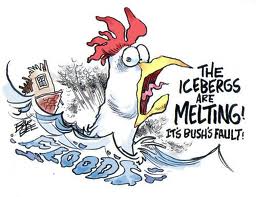An example of a successful public relations campaign conducted largely in the media was that of the aerosol industry which, during the 1970s, managed to forestall a ban on the use of CFC gases for several years. The $3 billion industry sought PR advice after the New York Times published an article putting forward the theory that aerosol use could deplete the ozone layer, causing serious public health and environmental impacts.
The PR response began with a press release which was reprinted with little change in the New York Times emphasising that the theory was just a hypothesis and not fact. In the ensuing campaign many more ‘news stories’ were ‘generated’ which were favourable to the industry in papers such as the Wall Street Journal, Business Week, Fortune magazine and the Observer in London. Briefing papers, press releases, transcripts of industry testimony and successfully placed news stories were distributed to aerosol industry people all over the country so they were able to answer media questions. They were also sent a guidebook for testifying at hearings and answering media questions. For example, in answer to a question suggesting the aerosols be banned because there was a chance they would damage the stratosphere, the following answer was suggested:
there is a slight risk that thousands of different products could be modifying the atmosphere to one degree or another. I do not think it is reasonable or proper to ban products at random to eliminate a threat that many qualified people doubt even exists.
 The symbol of children’s story book character Chicken Little exclaiming that “The sky is falling!” was used to great effect as part of the PR campaign and used in various newspaper headlines. And the industry front group, the Council on Atmospheric Sciences, retained ‘independent’ scientists to present their point of view in the media. Eventually CFC propellents were banned in 1977 in the US. Ken Makovsky, the PR man at the centre of the campaign says: “If we had not taken the offensive in this situation, the ban would have come a lot sooner, and the industry itself would have been unprepared to face market realities...” However, in many countries the aerosol industries managed to postpone a ban for several years after this, allowing US and other manufacturers to continue putting CFCs in aerosol cans for non-US markets.
The symbol of children’s story book character Chicken Little exclaiming that “The sky is falling!” was used to great effect as part of the PR campaign and used in various newspaper headlines. And the industry front group, the Council on Atmospheric Sciences, retained ‘independent’ scientists to present their point of view in the media. Eventually CFC propellents were banned in 1977 in the US. Ken Makovsky, the PR man at the centre of the campaign says: “If we had not taken the offensive in this situation, the ban would have come a lot sooner, and the industry itself would have been unprepared to face market realities...” However, in many countries the aerosol industries managed to postpone a ban for several years after this, allowing US and other manufacturers to continue putting CFCs in aerosol cans for non-US markets.